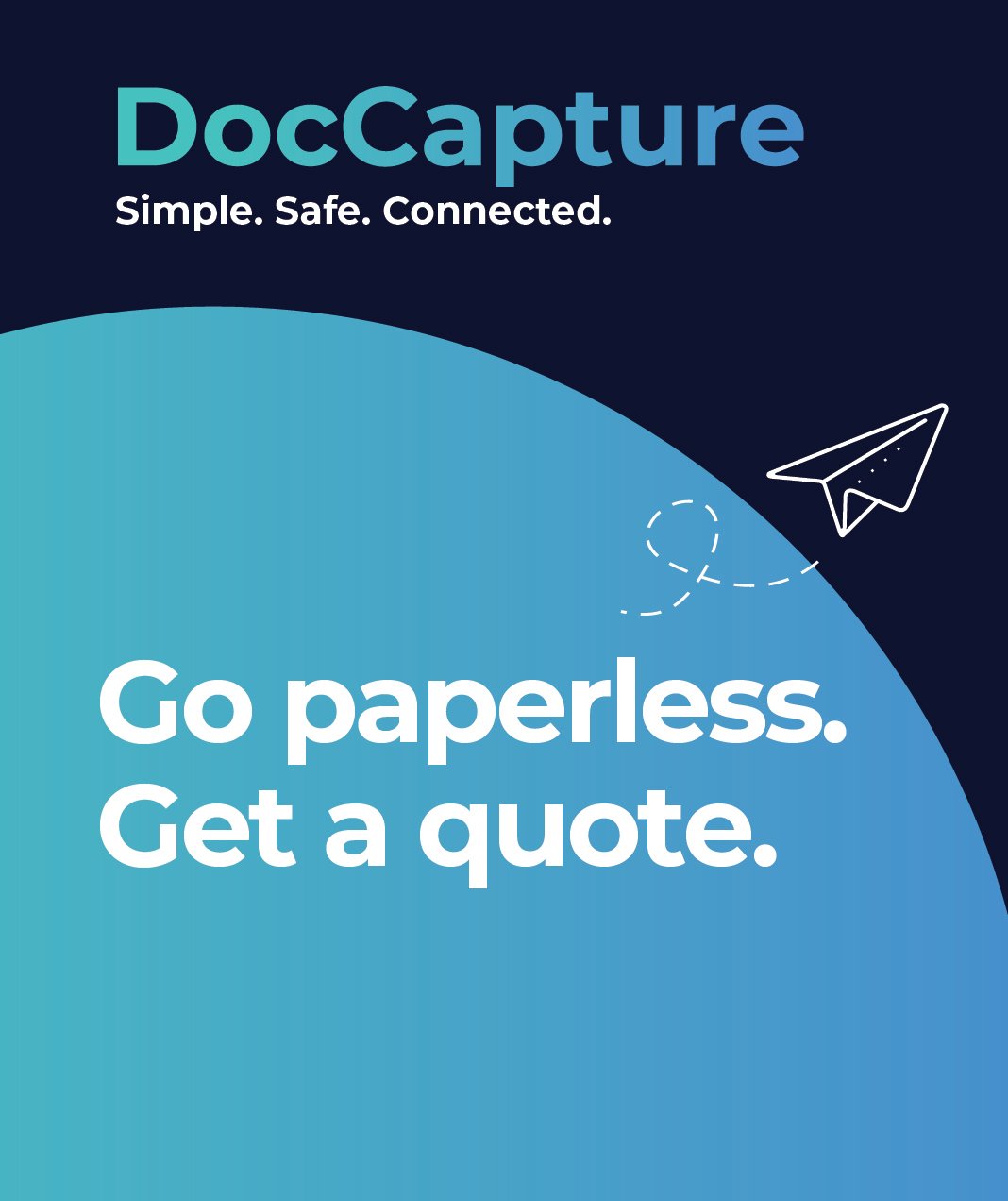Ensuring Compliance in HR with Secure Document Management
Table of contents
In the fast-changing world of human resources, compliance in HR with secure document management isn’t just a best practice — it’s a legal and operational necessity. From GDPR in Europe to HIPAA in the U.S. and state-specific employment laws, HR leaders face a complex web of regulations designed to protect employee data and ensure fair workplace practices. The stakes are high: a single compliance misstep can lead to costly fines, legal disputes, and reputational damage that takes years to repair.
Yet for many HR departments, the challenge isn’t a lack of awareness — it’s the struggle to manage sensitive records efficiently and securely while keeping up with regulatory changes. Traditional paper-based filing systems, with their risk of misplaced documents, unauthorized access, and slow retrieval times, leave organizations vulnerable during audits or investigations.
This is where secure digital document management becomes a game-changer. By digitizing and securely storing HR records, teams can ensure regulatory compliance, streamline daily operations, and provide auditable proof of due diligence — all while reducing administrative headaches. In this guide, we’ll explore why HR compliance demands more than filing cabinets, how digital solutions safeguard sensitive information, and why partnering with a proven provider like DocCapture can make all the difference.
The Compliance Challenge in HR
HR leaders today operate in an environment where regulations are not only numerous but constantly evolving. Data privacy laws like GDPR, sector-specific requirements like HIPAA, and local employment regulations each come with their own stipulations for how employee information must be stored, accessed, and retained. According to a PwC survey, 83% of executives rank compliance and regulatory risk as one of their top concerns, underscoring just how critical robust record management has become.
Non-compliance isn’t a minor inconvenience — it’s a high-stakes risk. Penalties can range from thousands to millions of dollars, depending on the jurisdiction and severity of the violation. Beyond the financial cost, the damage to an organization’s reputation can be long-lasting, eroding employee trust and impacting talent retention.
Many HR teams understand these risks but still find themselves underprepared when an audit notice arrives. That’s because traditional filing systems simply can’t keep pace with modern compliance demands. Even when policies are in place, paper-based records are prone to misfiling, unauthorized access, and degradation over time.
To stay ahead, HR leaders must embrace a shift toward secure, digital-first processes. As outlined in Digital Transformation in HR, this shift isn’t just about technology adoption — it’s about creating an infrastructure that can adapt to new laws, withstand audits, and protect sensitive employee data without slowing down daily operations.
Where Traditional HR Document Management Falls Short
For decades, filing cabinets and on-site archives were the default method for managing employee records. But in today’s compliance landscape, these manual systems expose HR departments to unnecessary risk and inefficiency.
1. Security vulnerabilities
Paper records are inherently difficult to protect. Sensitive documents — from medical information to disciplinary records — can be misplaced, accessed without authorization, or even lost to fire, flood, or theft. Unlike secure digital systems with role-based access controls, paper files provide no granular way to limit who sees what.
2. Inefficient retrieval
When an auditor requests proof of compliance, every minute counts. With a manual filing system, staff may spend hours (or days) searching through folders to find specific documents. This delay not only frustrates auditors but also increases the risk of missing or incomplete records.
3. Poor audit preparedness
Traditional systems lack the built-in audit trails necessary to demonstrate compliance. Without a digital log showing who accessed, modified, or archived a record — and when — proving due diligence becomes a challenge.
4. Space and cost constraints
Physical storage takes up valuable office space and requires ongoing resources for maintenance. Over time, the costs of archiving, retrieving, and securing paper files add up, without delivering the scalability that HR leaders need.
These shortcomings are why many organizations are turning to solutions like HR Document Scanning, which transform paper files into secure, searchable digital records. This not only mitigates risk but also lays the foundation for more efficient HR operations.
Secure Digital Document Management as the Solution
Transitioning to secure digital document management isn’t just a technological upgrade — it’s a strategic move that directly supports compliance in HR with secure document management. By digitizing records and implementing advanced security features, HR teams can meet regulatory demands while improving operational efficiency.
1. Accuracy and secure storage
High-quality scanning ensures that every document is captured in its entirety, eliminating the risk of missing information. Once digitized, files are stored in encrypted environments, protecting them from unauthorized access and data breaches.
2. Role-based access controls
Not every HR team member needs access to every record. With role-based permissions, you can define who can view, edit, or delete specific files — reducing exposure to sensitive data and aligning with compliance requirements such as GDPR’s “data minimization” principle.
3. Audit trail capabilities
Every action taken on a digital record can be logged automatically. This means that during an audit, you can produce a complete history showing when a document was created, accessed, updated, or archived — providing clear evidence of compliance efforts.
4. Seamless integration
Modern solutions integrate directly with HRIS and payroll platforms, ensuring that your document management system supports — rather than disrupts — existing workflows. This integration is critical to the smooth operation of compliance processes, as discussed in Digital Transformation in HR.
By adopting a secure, centralized, and fully searchable digital repository, HR leaders eliminate the chaos of paper files and ensure they are always audit-ready. The result is a compliance process that is proactive, not reactive — and a workforce that is protected at every stage.
Operational Benefits for HR Leaders
While the primary driver for implementing secure digital document management may be regulatory compliance, the operational benefits for HR leaders are equally compelling.
1. Significant time savings
With centralized, searchable digital files, retrieving a document takes seconds instead of hours. This efficiency frees HR teams to focus on strategic initiatives rather than administrative tasks, directly reducing burnout and improving productivity.
2. Reduced administrative workload
Automation tools can handle routine compliance tasks such as document indexing, retention scheduling, and access control updates. This minimizes the risk of human error and ensures policies are applied consistently across all records.
3. Seamless integration with existing systems
Modern document management solutions connect effortlessly with HR platforms, payroll systems, and benefits portals. This interoperability ensures that compliance processes fit into — rather than disrupt — daily workflows, as outlined in HR Document Scanning.
4. Long-term cost savings
While some HR leaders worry about the initial investment, the long-term financial benefits are clear. Reduced paper usage, lower storage costs, and fewer labor hours dedicated to manual filing quickly offset implementation expenses. In many cases, organizations see a measurable ROI within the first year.
By combining compliance assurance with operational efficiency, secure document management transforms HR departments from reactive record keepers into proactive stewards of data integrity.
Compliance Best Practices for HR Teams
Even with secure digital document management in place, HR leaders must adopt ongoing best practices to maintain compliance in HR with secure document management over time. A strong system is only as effective as the policies and habits that support it.
1. Implement clear retention schedules
Every type of HR record — from job applications to medical files — has a specific retention period dictated by law. Automating these schedules within your document management system ensures records are disposed of on time, reducing both clutter and compliance risk. For detailed guidance, review the 2023 Guide to HR Document Retention Requirements.
2. Conduct regular compliance audits
Annual or semi-annual audits of your HR documentation can uncover gaps before regulators do. Digital audit trails make this process far simpler, providing instant access to activity logs and document histories.
3. Provide ongoing data security training
Employees with access to sensitive HR data should be trained regularly on privacy laws, phishing threats, and secure file-handling procedures. Human error remains a major cause of data breaches, so awareness is key.
4. Align document management with policy automation
Link your digital document storage to HR policy workflows. For example, if a new hire signs a confidentiality agreement, the signed file should automatically be stored under the correct category, with the proper retention schedule applied.
5. Leverage resources for digital transformation
Stay ahead of emerging compliance trends by tapping into insights like those shared in Digital Transformation in HR. Proactive adaptation is far less stressful — and costly — than scrambling after a rule change.
By embedding these best practices into daily operations, HR leaders can ensure that their secure document management system remains a living, evolving part of the compliance strategy.
Why Partner with DocCapture
Selecting the right technology partner is just as important as choosing the right system. For HR leaders focused on compliance in HR with secure document management, DocCapture offers a proven blend of expertise, security, and support tailored to the unique challenges of human resources.
1. Proven track record with HR departments
DocCapture has helped numerous mid-sized and large organizations transition from outdated paper systems to secure, fully digital document management. These projects have consistently delivered measurable compliance improvements and faster audit readiness.
2. Secure, compliant solutions
DocCapture’s platform is built with compliance at its core, offering encryption, role-based access controls, and detailed audit logs. This ensures alignment with GDPR, HIPAA, and a range of local employment laws. For HR teams exploring modernization, their HR Document Scanning service provides a structured path to digitization without disrupting daily operations.
3. Seamless integration and change management
One of the biggest barriers to adoption is concern over system integration. DocCapture’s solutions work with leading HRIS platforms, payroll software, and benefits portals, ensuring minimal disruption. They also provide hands-on change management support, guiding HR teams through training, migration, and process updates.
4. Long-term partnership approach
Rather than a one-off software provider, DocCapture positions itself as an ongoing compliance partner — offering regular updates, security enhancements, and strategic guidance to help HR teams stay ahead of evolving regulations.
By partnering with DocCapture, HR leaders gain not only the technology to meet today’s compliance standards but also the strategic support to anticipate tomorrow’s requirements.
Conclusion
In today’s regulatory environment, compliance in HR with secure document management isn’t optional — it’s essential. HR leaders face increasing pressure to protect sensitive employee data, respond quickly to audits, and stay ahead of evolving labor laws. Paper-based systems simply can’t deliver the level of security, accessibility, and audit readiness required.
By transitioning to a secure digital document management solution, HR teams can safeguard data, streamline compliance processes, and free up valuable time for strategic priorities. And with DocCapture as your partner, you gain not just cutting-edge technology but also the expertise and support to make your digital transformation seamless and sustainable.
If your organization is ready to eliminate compliance chaos, visit HR Document Scanning to learn more about how DocCapture can protect your HR records. Fill out our “Get a Quote” form today to start your journey toward a more secure, efficient, and audit-ready HR department.
Share this
You May Also Like
These Related Stories

The Future of HR: Adopting Digital Solutions for Compliance and Security

Mitigating Risks in HR Through Effective Document Management

